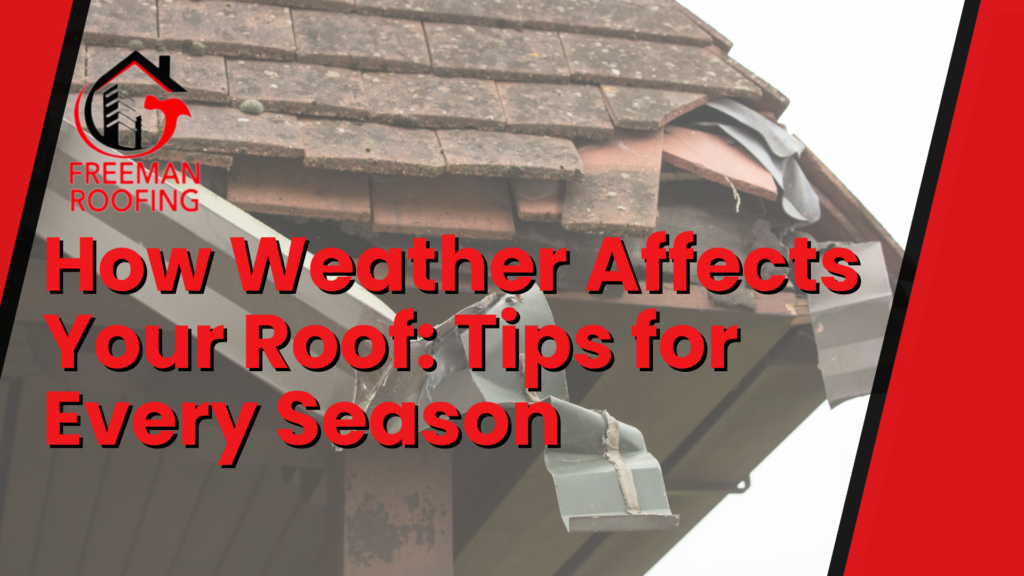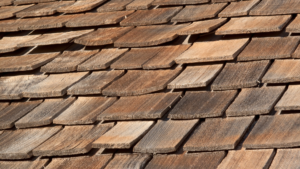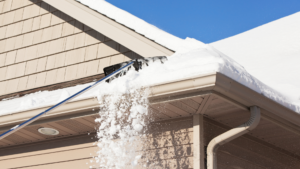How Weather Affects Your Roof: Tips for Every Season

Your roof is your home’s first line of defense against the elements, and understanding how different weather conditions impact its performance is crucial for maintaining its integrity. In this blog, we’ll explore how seasonal weather changes affect your roof and provide practical tips to keep it in excellent condition all year round.
Spring: Prepare for Rain and Wind
Impact of Spring Weather
Spring often brings heavy rain and wind, which can strain your roof. Increased moisture can lead to leaks, while strong winds may loosen shingles or cause debris to accumulate.
Tips for Spring Maintenance
- Inspect for Damage: After winter, check for loose or damaged shingles. Replace any that are compromised to prevent leaks.
- Clear Gutters: Ensure your gutters and downspouts are clean and free of debris to facilitate proper drainage.
- Check for Moss and Algae: Spring’s moisture can encourage the growth of moss and algae, so consider cleaning your roof to prevent buildup.
Summer: Be Mindful of Heat and UV Rays

Impact of Summer Weather
During the summer, high temperatures and UV rays can cause your roofing materials to degrade over time. Heat can lead to warping, cracking, and fading.
Tips for Summer Maintenance
- Regular Inspections: Conduct routine inspections to identify any signs of wear or damage, especially after storms.
- Enhance Ventilation: Proper attic ventilation can help regulate temperatures and reduce heat buildup, extending your roof’s lifespan.
- Trim Overhanging Branches: Keep trees trimmed to prevent branches from rubbing against your roof and causing damage during summer storms.
Fall: Prepare for Leaves and Storms
Impact of Fall Weather
As leaves fall, they can accumulate on your roof and in gutters, causing drainage issues. Fall storms can also bring heavy winds and rain, leading to potential roof damage.
Tips for Fall Maintenance
- Clean Gutters and Roof: Regularly remove leaves and debris from your roof and gutters to prevent blockages and water backup.
- Inspect Flashing: Check the flashing around chimneys, vents, and skylights for damage and reseal as necessary to prevent leaks.
- Schedule a Professional Inspection: Before winter sets in, consider a professional roof inspection to identify any potential issues.
Winter: Guard Against Snow and Ice

Impact of Winter Weather
Snow and ice can weigh heavily on your roof, leading to potential sagging or structural issues. Ice dams can also form along eaves, trapping water and causing leaks.
Tips for Winter Maintenance
- Remove Snow Accumulation: After heavy snowfall, safely remove snow from your roof to prevent excess weight and minimize the risk of ice dams.
- Insulate Your Attic: Proper insulation can help maintain a consistent roof temperature, reducing the likelihood of ice dam formation.
- Monitor for Ice Dams: Keep an eye on eaves and gutters for ice buildup. If you notice ice dams forming, consult a professional for safe removal.
Bottom Line
Weather can significantly impact the health of your roof throughout the year. By understanding how seasonal changes affect your roofing materials and implementing proactive maintenance measures, you can extend the lifespan of your roof and protect your home from potential damage. Regular inspections and timely repairs will help ensure that your roof remains in top condition, regardless of the weather.
